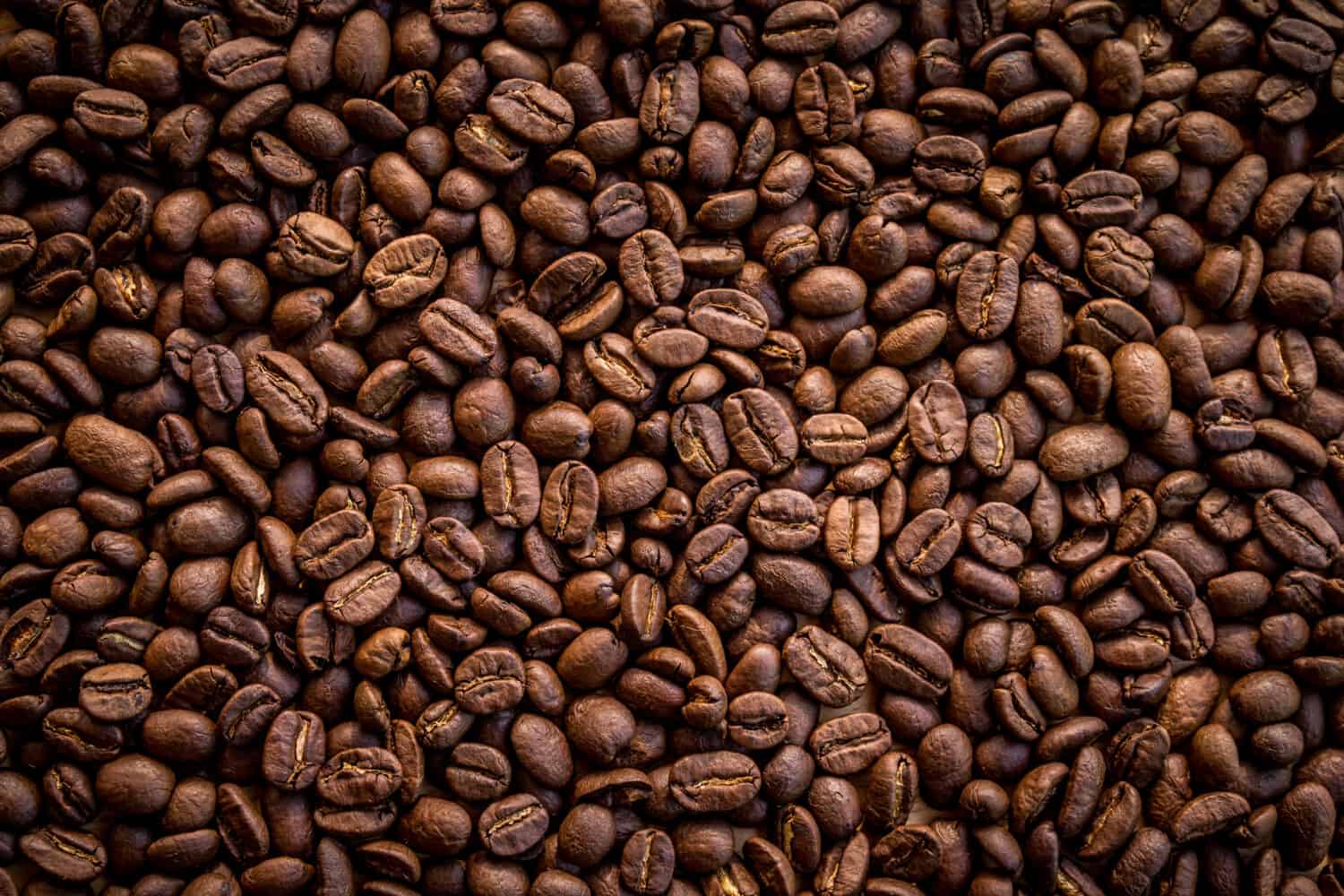Did you know that there are over 100 kinds of coffee beans? Two of the most popular include Arabica and Robusta beans. But, what are the differences between Arabica vs. Robusta coffee beans? The major differences come down to the flavor, discerning appearance features, the climate they grow, and caffeine, and acidity. These qualities also contribute to a price difference between Arabica vs. Robusta coffee. While both kinds of beans come from coffee plants, Arabica is cultivated from the Coffea Arabica variety, while Robusta comes from the Coffea canephora variety. Coffee is unique in its nuanced flavor profile, how it is brewed, and the many drinks, treats, and sweets it can be made into. Let’s learn some more about what distinguishes these two kinds of beans from the umbrella of coffee plants and beans.
Keep on reading as we talk about the history of Arabica vs. Robusta coffee beans. We’ll discuss their differences in terms of flavor profile, appearance, caffeine, and acid content. Whether you’re an avid coffee drinker, or just enjoy learning, it’s always good to know what you’re drinking. Your next trip down the tea and coffee aisle will be a breeze once you know exactly what flavors you’re looking for. Never contemplate types of coffee beans again once you understand the differences between Arabica vs. Robusta coffee beans.
Arabica vs. Robusta: How Are They Different?
When considering Arabica vs. Robusta coffee beans, the major differences include the flavor, appearance of the beans, the climate in which they grow, and their caffeine, and acid content. Arabica is often referred to as the milder of the two blends, and it has less caffeine overall. Robusta beans are much higher in caffeine content but have a markedly less nuanced flavor. Let’s get more into the details of the differences between Arabica vs. Robusta coffee beans (via Brittanica).
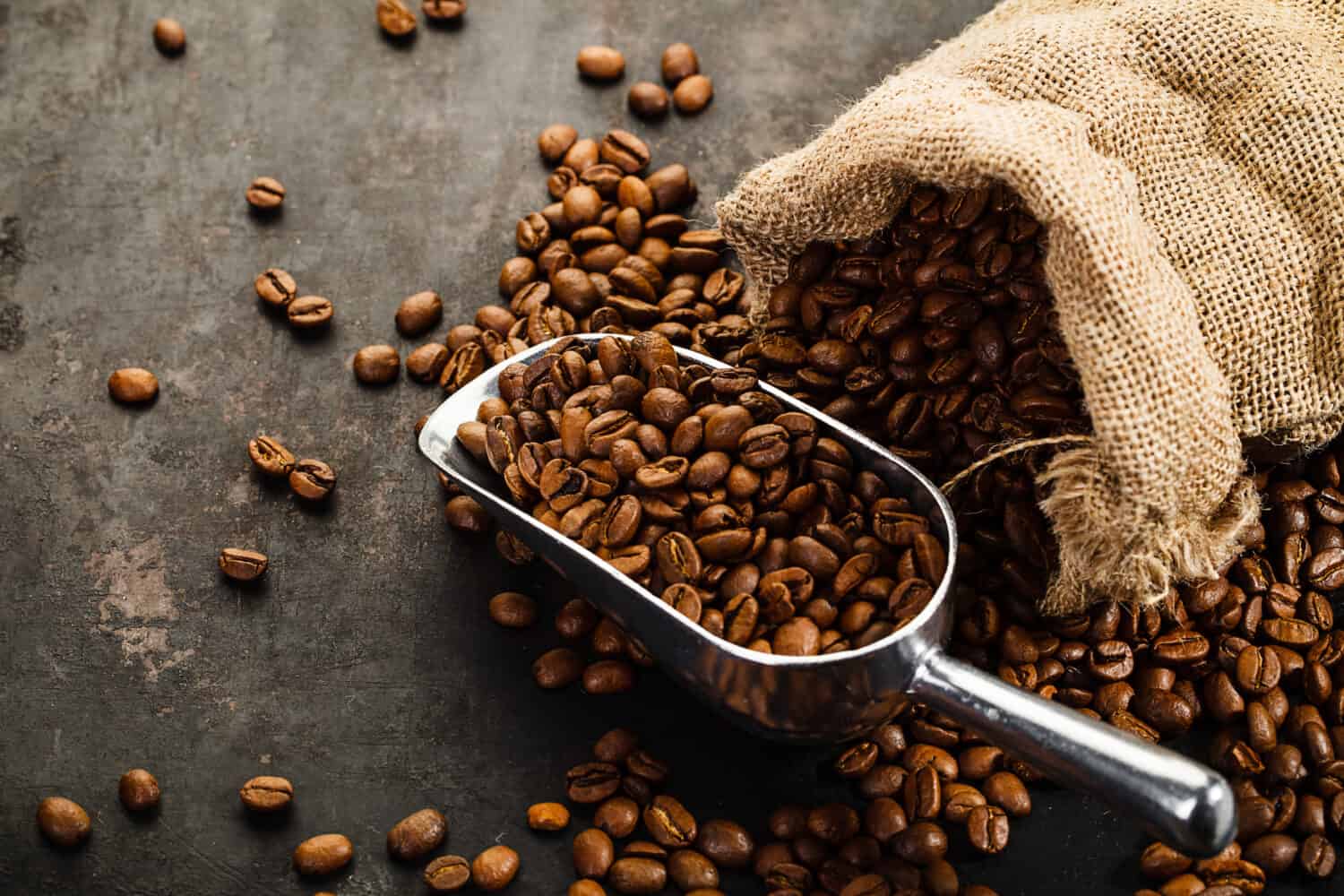
©Ilja Generalov/Shutterstock.com
History of Coffee Plants
The Arabica Variety
Coffea Arabica hails from Ethiopia. From there, its lineage can be traced to Yemen, where several other varieties including Bourbon and Typica descendents were cultivated. All these varieties of the Arabica coffee plant spread from Yemen to India, and Indonesia via Dutch trade routes. The Typica variety became popular in Amsterdam around the 18th century, and a single coffee plant offered to King Louis XIV during the Utrecht peace treaty of 1714, started the coffee plant popularity in France. It’s clear that coffee plants have been a value to all kinds of cultures, especially the climates in which they flourish, for thousands of years (via World Coffee Research).
According to Brittanica, there is evidence that the drink was banned, encouraged, and used in many medical, political, and religious settings. The largest producers of Arabica coffee are generally concentrated in Brazil, and modern technology like industrial roasting or grinding machines, helped speed up the overall process. In the 1950s, instant coffee became popular, which increased the demand for the production of Robusta varieties of coffee beans.
Evolution Of Robusta Coffee
The robust variety of coffee plants comes from the tropical areas of Africa. The first cultivations can be traced to the 1870s in the Congo. The French observed this species in the wild and it was officially named C. canephora in 1895 by a French botanist named Louis Pierre. Into the 19th century, Robusta plants were grown in areas of Belgium and Southeast Asia. Unlike Arabica plants, Robusta plants seemed to have a resistance to bugs, and sicknesses like “coffee leaf rust,” which made them cheaper to grow and keep alive overall. Robusta plants spread to India, Madagascar, Uganda, the Ivory Coast, and Ghana. It contains twice as much caffeine as Arabica varieties of coffee beans and has a lower acidity. Modern-day Robusta plants are predominantly grown within Asia, and Oceania, as well as South America. Robusta beans are used in instant coffee commercially (via World Coffee Beans).
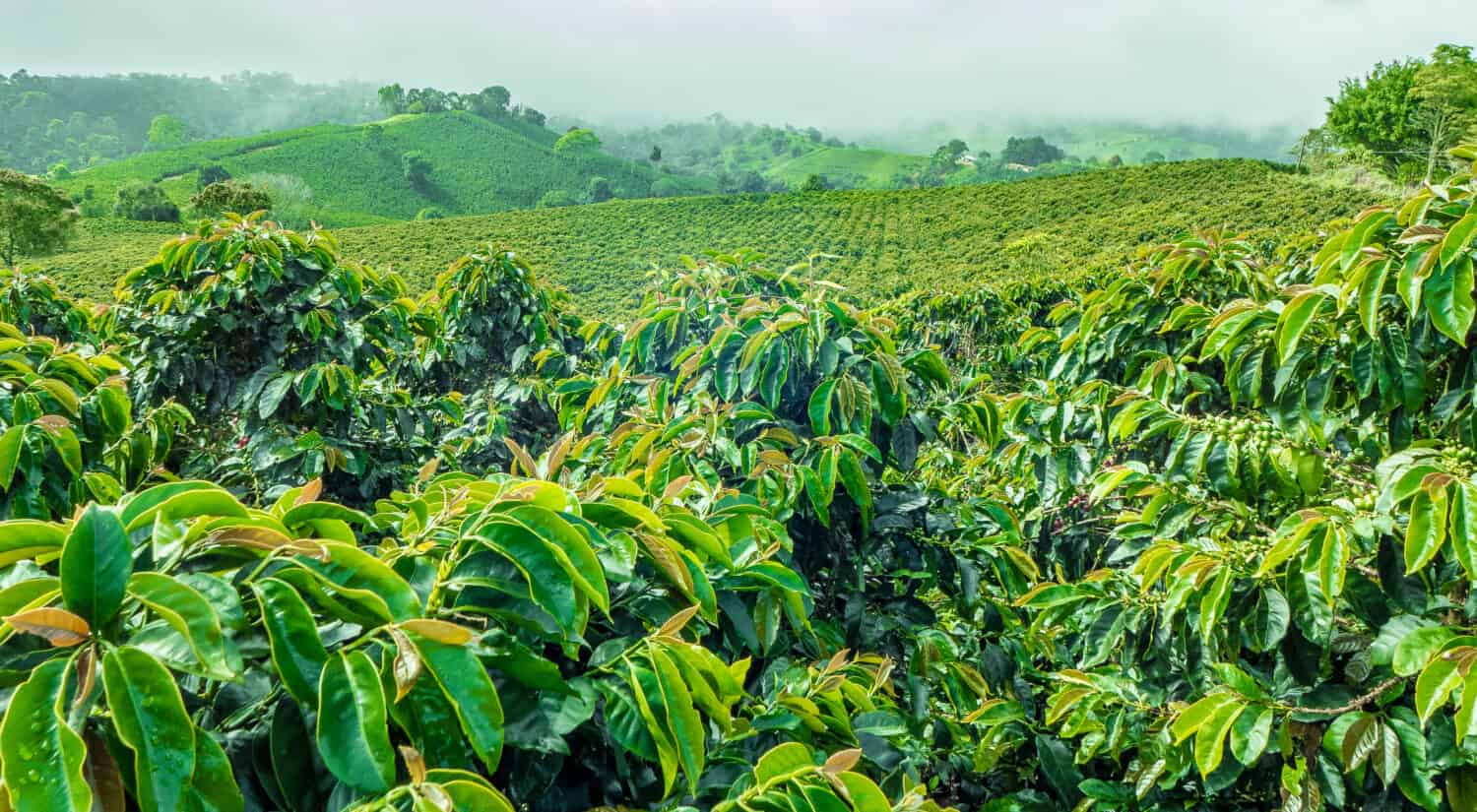
©Martin Nabert/Shutterstock.com
What Are Arabica Beans?
Arabica beans come from the Coffea Arabica plant. They have a sweet, fruity, nuanced taste, a high acidity, and a little more than half of the caffeine content of Robusta-type coffee beans. Appearance wise they are long and flat. Most coffee connoisseurs are in the Arabica camp despite the caffeine disparity. This is because the taste of the beans truly comes through in Arabica beans. The main varieties of Arabica coffee plants include Bourbon, Kona, and Catimor, among a few others. They are affected by the climate they grow in, and the soil content they’re planted in. Processing and roasting can also influence the overall taste of the Arabica coffee beans. They do best in temperate climates, at higher elevations, things which are absolutely being affected by climate change (via Food & Wine).
What Are Robusta Beans?
Robusta beans (Coffea canephora) thrive in all kinds of warm climates and are generally more resistant to pests and plant diseases. They yield a lot during harvest, producing twice as much caffeine as Arabica coffee beans, with a lower acidity overall. This makes them cheaper to produce with a much higher rate of harvest, in warmer temperatures. However, they do not have the taste profile of the Arabica, overall much stronger in taste with less sweet undertones. Appearance-wise they are more rounded than the Arabica type of coffee beans.
How Do Coffee Beans Grow?
Coffee plants produce fruits which are referred to as “coffee cherries.” Once the fruits are ripe, these fruits can be opened to reveal the coffee beans. That's right, coffee beans are actually the seeds of the coffee plant! Each cherry contains seeds, or beans. Often times each fruit will have two seeds, the ones that contain only one seed are sometimes considered to have a denser, more concentrated flavor. These seeds are then dried before they can be roasted. If decaffeination happens, it is during the drying phase. This process involves using chemical solvents, carbon dioxide or triglyceride extraction, or carbon filtering to remove much of the caffeine from the bean. Not all the caffeine will ever be fully removed.
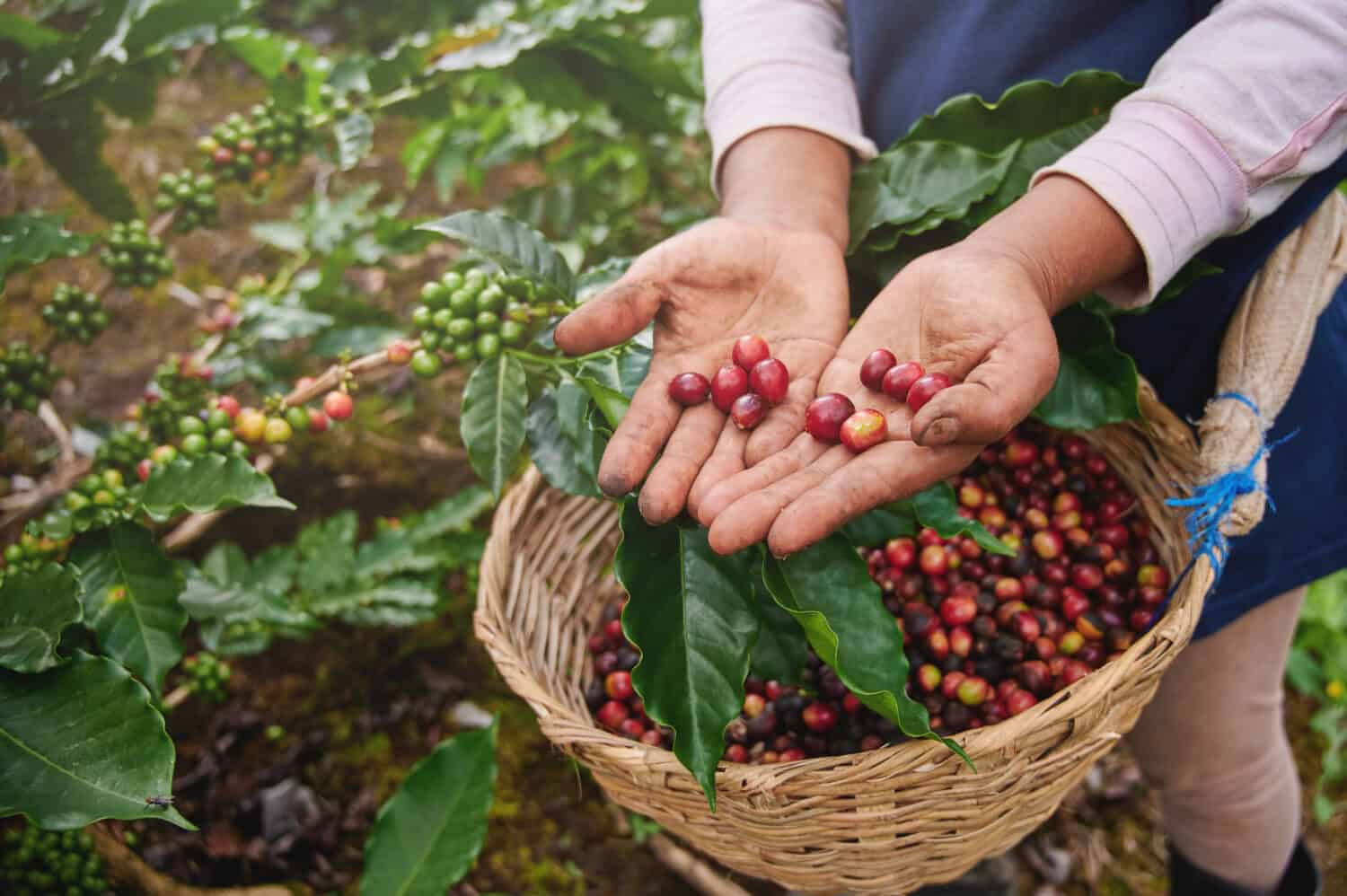
©PixieMe/Shutterstock.com
Coffee Roasting And Production
The next step in coffee bean production involves the grading of the beans. Beans are graded and classified depending on the coffee bean if they’re organic, and if they were produced to the standards of fair trade certification. Fair Trade coffee requires that coffee is harvested without herbicides and pesticides and without the use of child labor. There’s also the Rainforest Alliance and Smithsonian’s Bird Friendly certifcatons which are awarded for sustainable and bio-diverse bean production.
Roasting is the process by which beans are heated between temperatures of 356°- 482° Fahrenheit for between 7-20 minutes. The length of the roast affects if the classification is light roast, medium roast, or dark roast beans. Roasting time depends very much on the type of bean, for instance, Arabica may be roasted less to ensure the flavor and aroma aren’t destroyed by too much heat. Robusta beans can often be overroasted to get rid of extra bitterness and acidity. You can buy beans whole or ground depending on your preferred process. Grinding enables immediate use with pour-over, French press, and instant coffee machines. Some people prefer to grind their own beans.
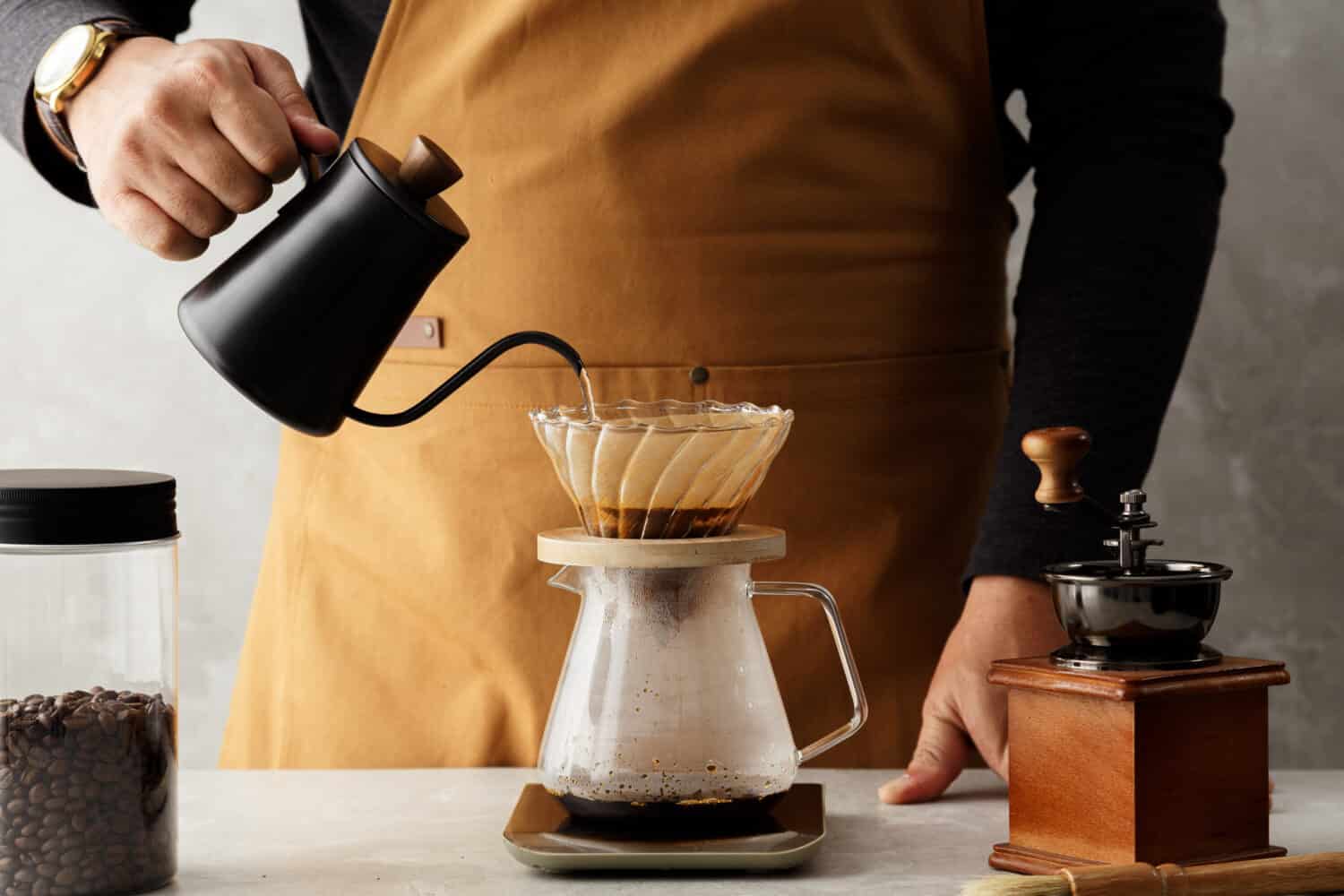
©SharkPaeCNX/Shutterstock.com
Caffeine And Acidity Comparison
As we’ve discussed, Arabica has a higher acidity content, while only having a little over half the caffeine produced by Robusta coffee beans. According to Food & Wine, a study comparing 100 grams of Arabica to 100 grams of Robusta, there are 154 milligrams found in the Arabica brew, with 184 milligrams found in the Robusta brew. How the coffee plant is grown, how the resulting coffee beans are brewed, and the amount of water added can all impact the caffeine level of a certain brew. But generally, Arabica has more acidity and less caffeine while Robusta has less sugar, more caffeine, and a lower acidity level.
Arabica vs. Robusta Beans: Are They The Same Thing?
While Arabica and Robusta beans are the two most common types sold throughout the world, many people don’t really consider the differences. They differ in flavor, appearance, caffeine, and acidity levels, as well as where they can grow. All of these things are important qualities that set Arabica vs. Robusta beans apart.
Possible Alternatives To Arabica And/Or Robusta Beans
There are quite a few variations of these kinds of beans. For Robusta, it’s the Eretca and Nganda varieties. For Arabica coffee it's the aforementioned Kona, Bourbon, and Typica offshoots. If you’re wanting to change up your coffee consumption in terms of taste profile, why not try a few different varieties of beans or types of roast? If you’re looking for coffee alternatives altogether, caffeinated teas are a great option. Caffeine alternatives include herbal options like ashwagandha, chicory, beetroot, and mushrooms (via Forbes). Mud\Wtr and Four Sigmatic are companies that offer herbal caffeine alternatives that can replace your daily coffee.
The image featured at the top of this post is ©Tendo/Shutterstock.com.
